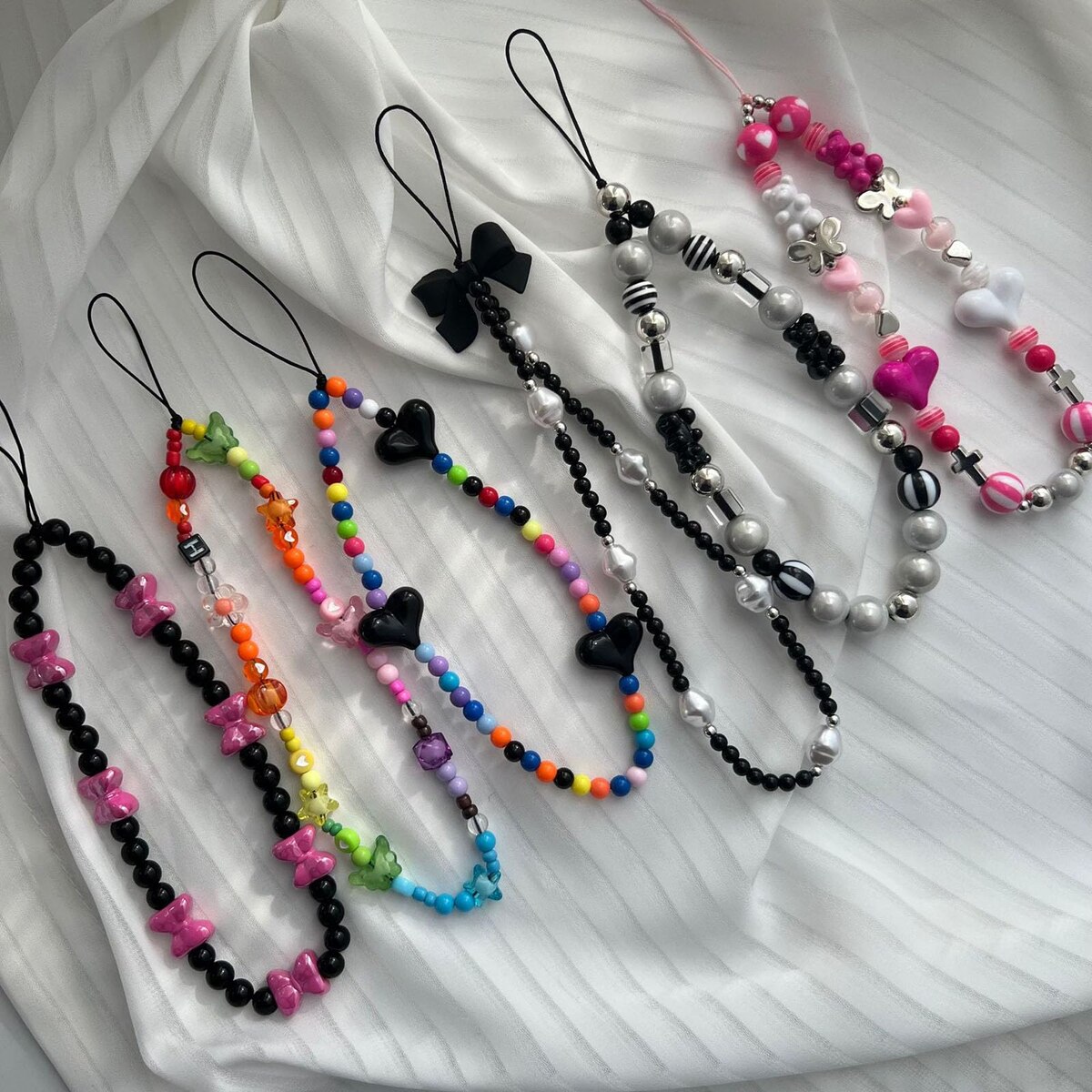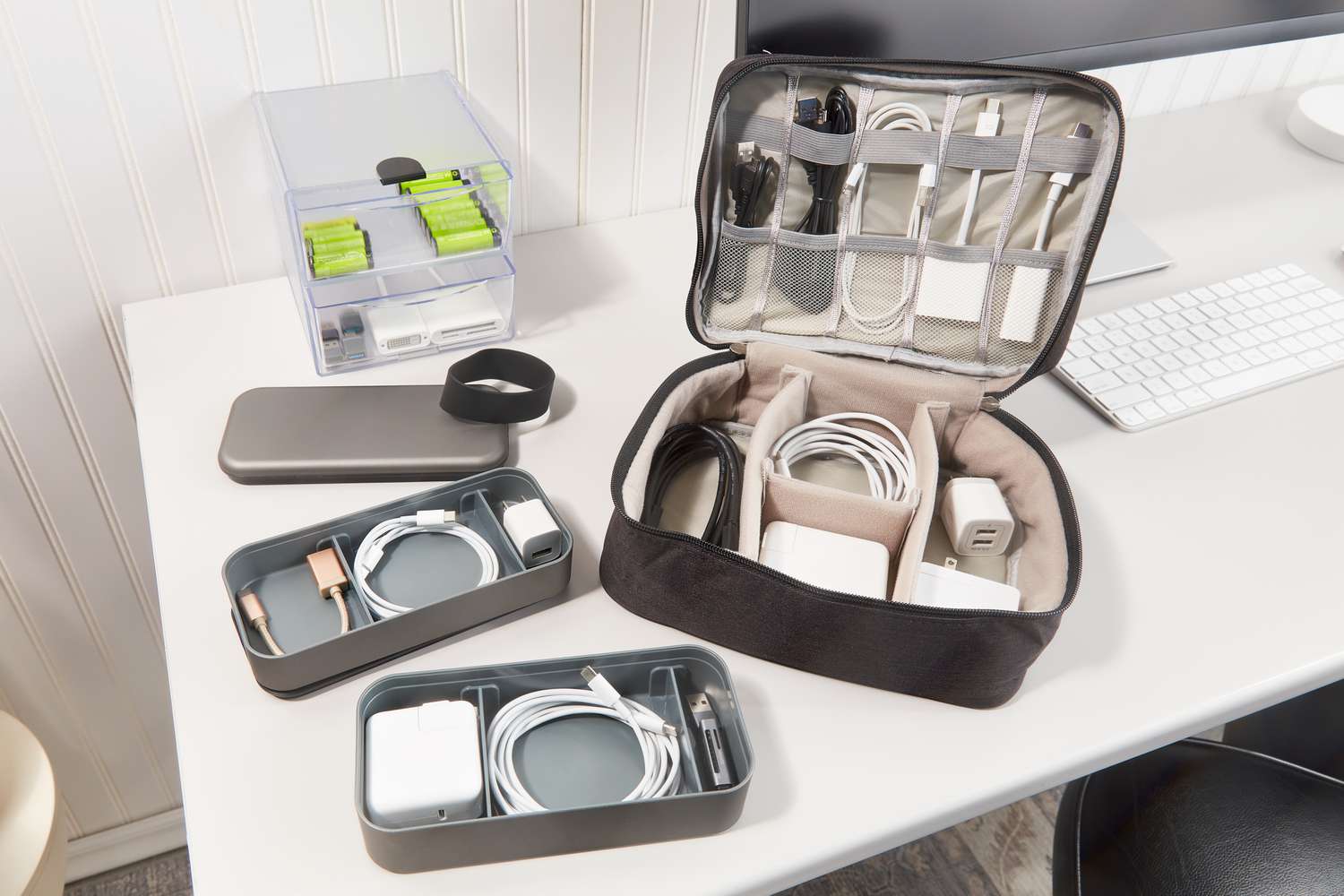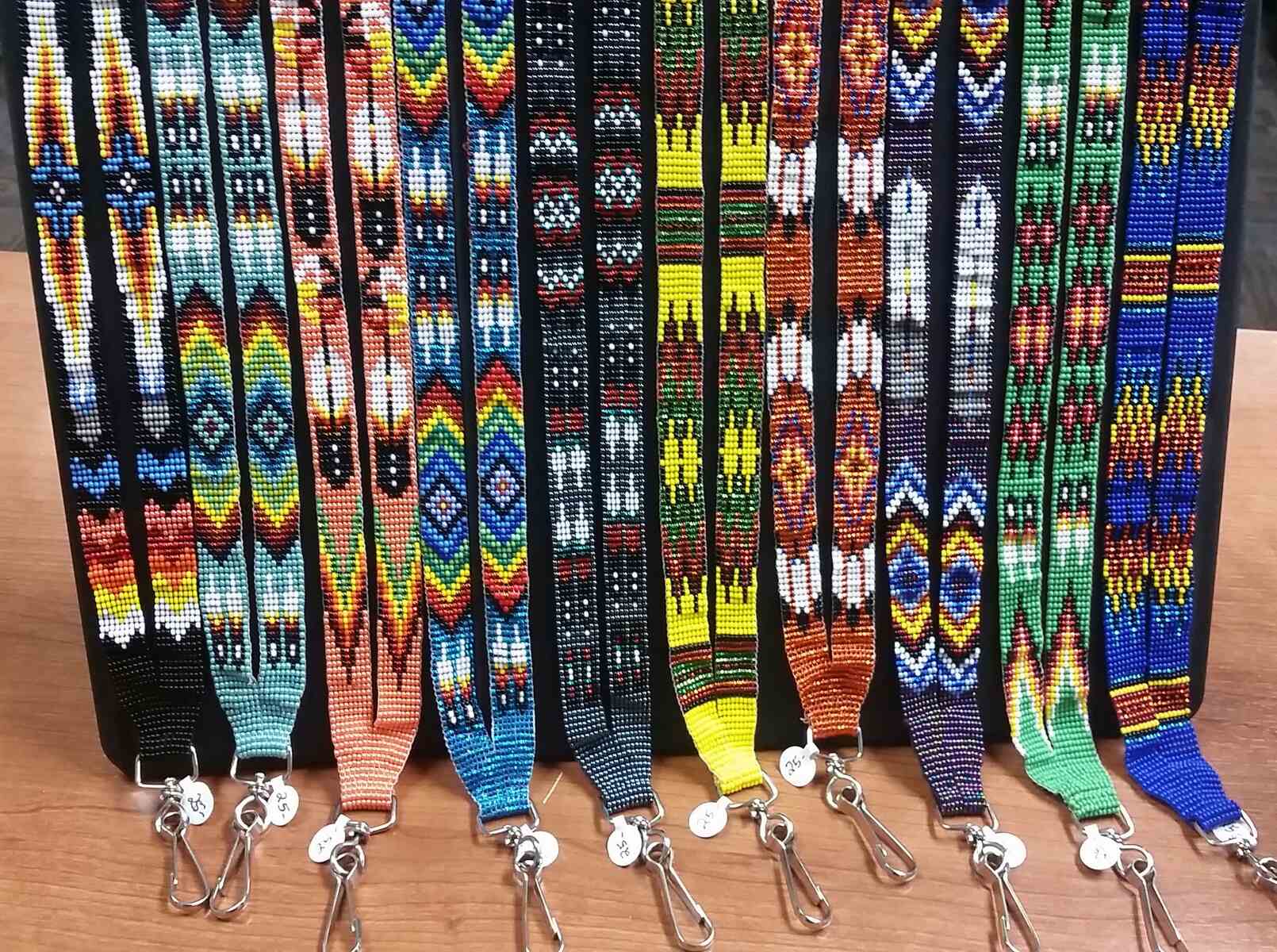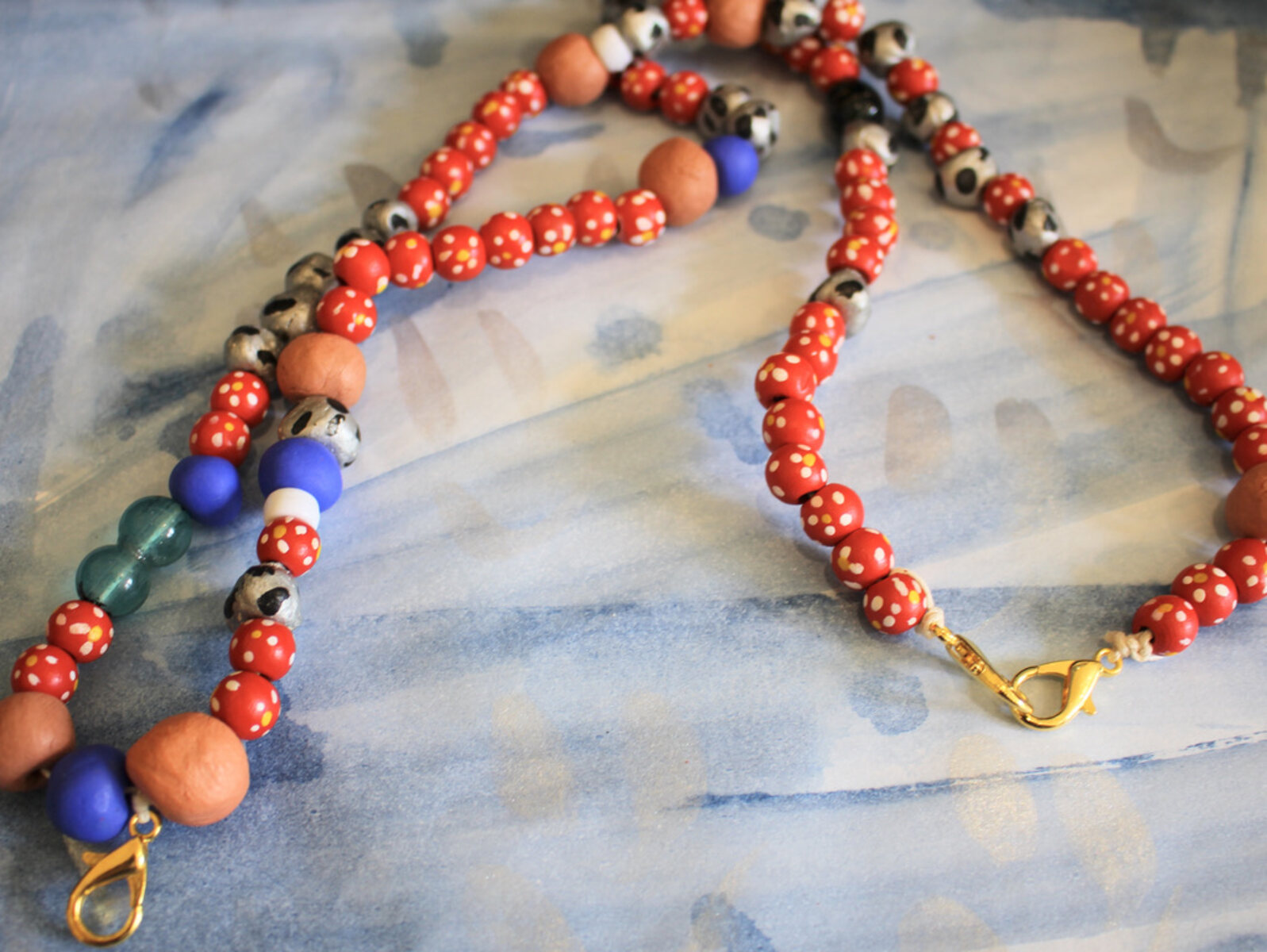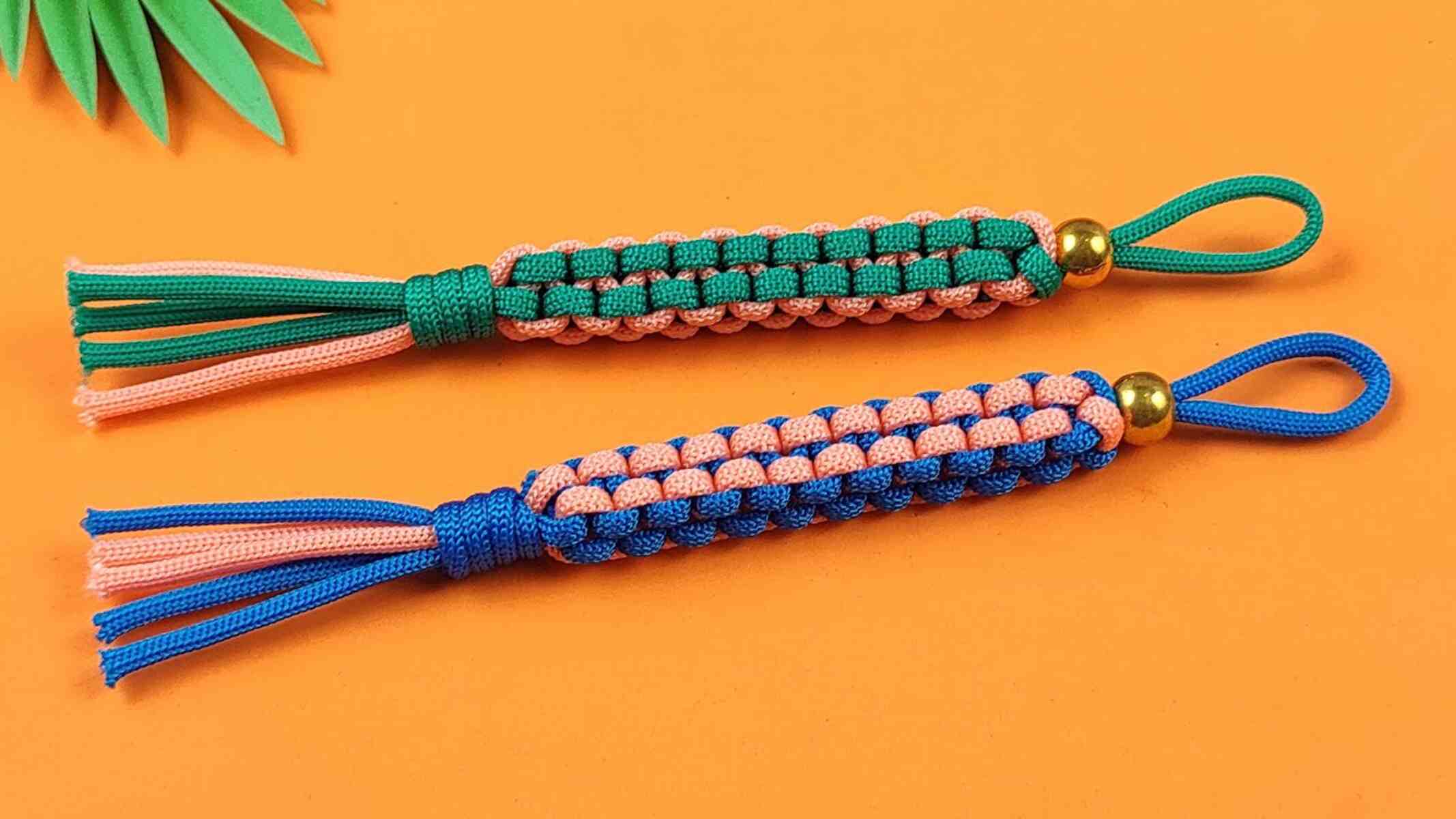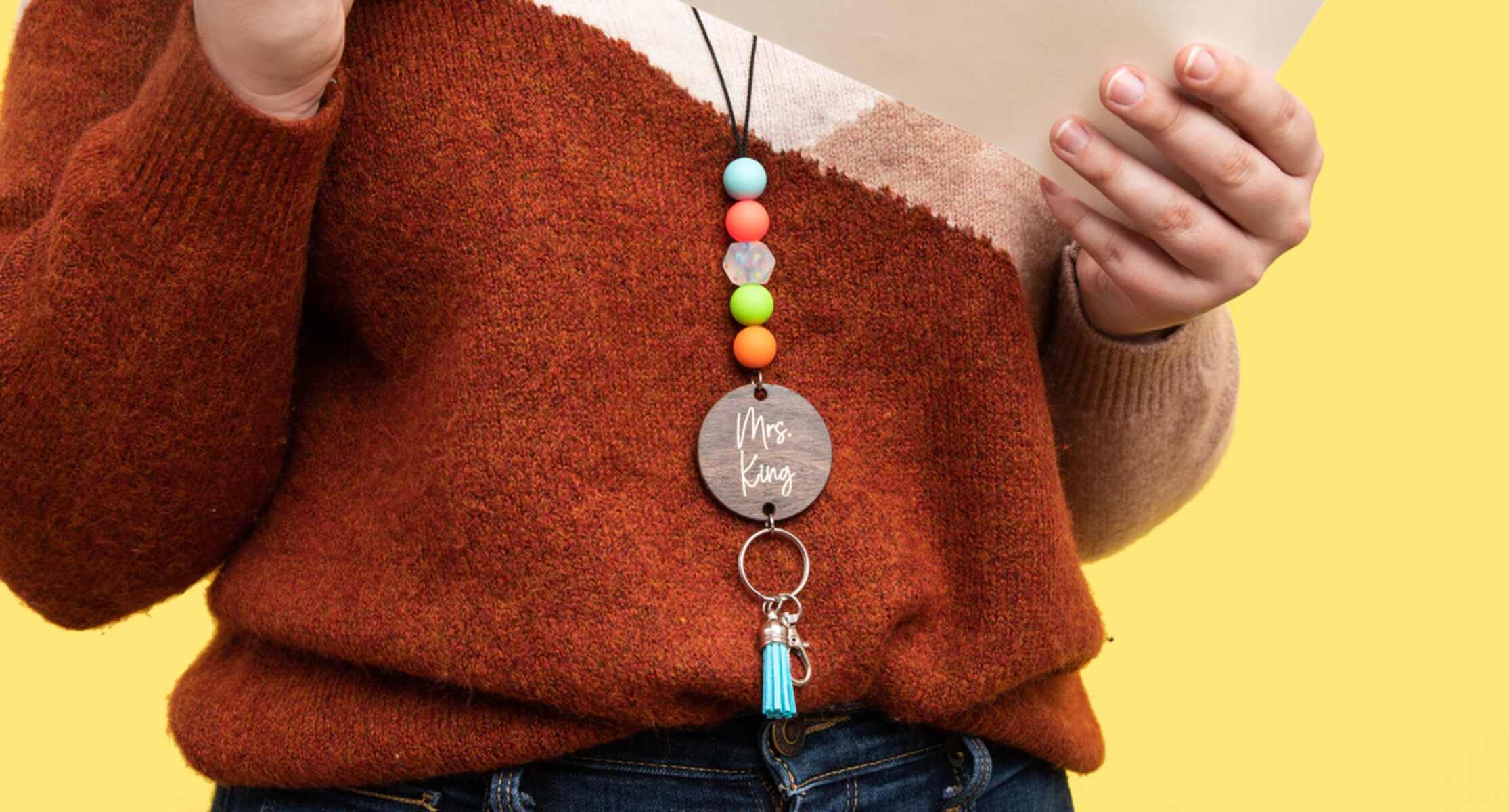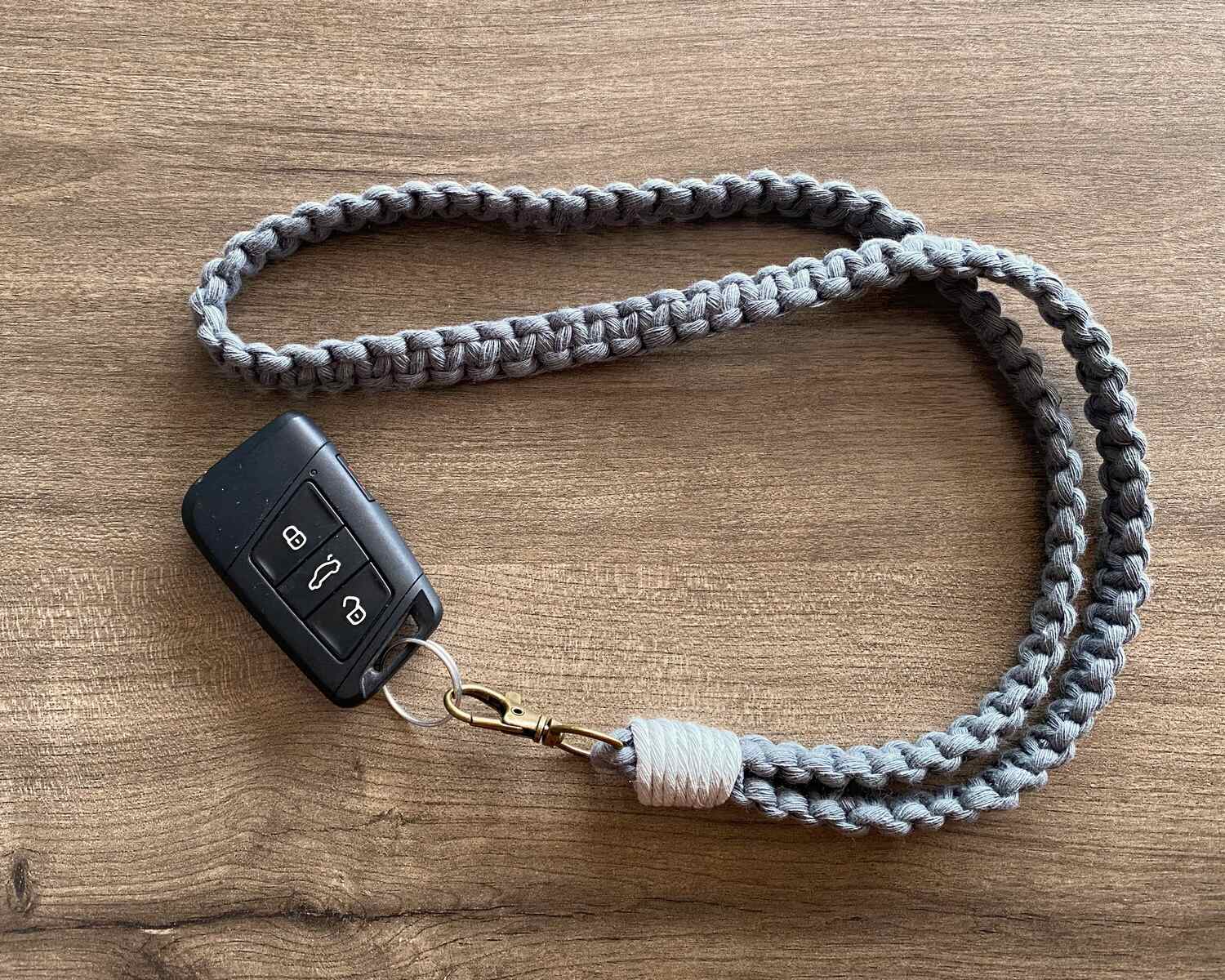Introduction
Lanyards have become a popular accessory for both practical and aesthetic purposes. Whether used to hold keys, identification cards, or simply as a fashion statement, lanyards offer a versatile and customizable way to express personal style. One of the most appealing aspects of lanyards is the ability to craft them from scratch, allowing for a personalized touch that sets them apart from mass-produced alternatives.
Crafting lanyards with silicone beads has emerged as a trendy and creative activity for individuals of all ages. The use of silicone beads adds a modern and vibrant twist to the traditional lanyard, making it a fashionable accessory for various occasions. From vibrant color palettes to unique shapes and textures, silicone beads offer a wide range of options for creating eye-catching lanyards that reflect individual tastes and preferences.
In this comprehensive guide, we will delve into the art of crafting trendy lanyards with silicone beads. From selecting the right materials to designing intricate patterns, we will explore the step-by-step process of creating stunning silicone bead lanyards. Whether you are a seasoned crafter or a beginner looking to explore a new hobby, this guide will provide valuable insights and tips to help you embark on your lanyard-making journey.
So, gather your creativity and let's dive into the world of silicone bead lanyards, where imagination knows no bounds and every bead tells a unique story. Whether you're crafting lanyards for personal use, gifting them to friends and family, or even considering selling your creations, this guide will equip you with the knowledge and inspiration to bring your lanyard designs to life. Let's embark on this exciting crafting adventure together and unleash the endless possibilities of silicone bead lanyards!
Materials Needed
Before embarking on the journey of crafting trendy lanyards with silicone beads, it's essential to gather the necessary materials. The beauty of lanyard-making lies in the versatility of materials, allowing for endless creative possibilities. Here's a comprehensive list of the materials needed to get started:
-
Silicone Beads: The centerpiece of your lanyard creation, silicone beads come in a myriad of colors, shapes, and sizes. From vibrant neon hues to pastel shades and metallic finishes, silicone beads offer a wide spectrum of options to suit various design preferences. Consider selecting an assortment of silicone beads to add depth and visual interest to your lanyard.
-
Cord or String: Choosing the right cord is crucial for the structural integrity and aesthetic appeal of your lanyard. Opt for durable and flexible cords such as nylon, satin, or leather cords, ensuring they are strong enough to hold the weight of the beads while maintaining a comfortable feel around the neck or wrist.
-
Scissors: A pair of sharp scissors is essential for cutting the cord to the desired length and neatly trimming any excess material. Precision is key when working with silicone beads, so ensure your scissors are suitable for detailed cutting tasks.
-
Clasps and Attachments: Depending on the intended use of your lanyard, you may require clasps and attachments to secure items such as keys, ID cards, or badges. Lobster clasps, split rings, and swivel hooks are popular choices for lanyard attachments, offering both functionality and style.
-
Optional Embellishments: While silicone beads take center stage in lanyard designs, incorporating additional embellishments such as charms, tassels, or metal accents can elevate the overall look of your creation. These optional embellishments can add a touch of personalization and flair to your lanyard design.
-
Design Board or Work Surface: Having a designated work surface or design board ensures a tidy and organized crafting environment. It provides a stable area to lay out your materials, experiment with bead arrangements, and work on intricate patterns without the risk of losing or misplacing components.
-
Optional Tools: Depending on your preferred lanyard-making techniques, you may consider using tools such as bead trays, beading needles, or jewelry pliers to enhance precision and efficiency during the crafting process.
By assembling these essential materials, you'll be well-equipped to embark on the exciting journey of crafting trendy lanyards with silicone beads. With a creative spirit and a colorful array of materials at your disposal, you're ready to bring your lanyard designs to life, one bead at a time.
Step 1: Choosing the Right Silicone Beads
Selecting the perfect silicone beads is a pivotal first step in the process of crafting trendy lanyards. These beads serve as the focal point of the lanyard, dictating its aesthetic appeal and overall visual impact. When choosing silicone beads for your lanyard designs, several factors come into play, each contributing to the uniqueness and charm of the final creation.
Consider the Color Palette
The color palette of silicone beads sets the tone for the entire lanyard design. Whether you opt for vibrant, eye-catching hues or subtle, pastel tones, the color selection can evoke different moods and styles. Consider the intended use of the lanyard and the preferences of the recipient, if applicable. Vibrant colors may be ideal for creating playful and youthful lanyards, while muted tones can exude elegance and sophistication.
Explore Shapes and Sizes
Silicone beads come in a diverse range of shapes and sizes, offering endless possibilities for creative expression. From classic round beads to unique geometric shapes and intricate designs, the choice of bead shapes can add dimension and character to the lanyard. Mixing different bead sizes and shapes can create visually captivating patterns, adding depth and texture to the overall design.
Texture and Finish
The texture and finish of silicone beads contribute to the tactile and visual appeal of the lanyard. Smooth, glossy beads offer a polished and contemporary look, while matte or frosted finishes exude a more understated and organic feel. Additionally, beads with textured surfaces can introduce tactile interest, inviting touch and exploration.
Theme and Personalization
Consider incorporating beads that align with a specific theme or reflect the interests and personality of the lanyard's intended wearer. Whether it's a sports-themed lanyard adorned with ball-shaped beads or a nature-inspired design featuring leaf and floral motifs, thematic elements can infuse a personal touch into the lanyard, making it a meaningful and cherished accessory.
Quality and Durability
Prioritize the quality and durability of the silicone beads to ensure the longevity of the lanyard. Opt for beads that are resistant to fading, chipping, or discoloration, especially if the lanyard is intended for everyday use. High-quality silicone beads will maintain their vibrant colors and pristine appearance, preserving the allure of the lanyard over time.
By carefully considering these aspects when choosing silicone beads, you can curate a collection of beads that harmoniously blend to form a visually stunning and personalized lanyard. With the right silicone beads in hand, you're one step closer to bringing your lanyard vision to fruition, infusing it with creativity, style, and individuality.
Step 2: Selecting the Right Cord
Choosing the appropriate cord is a crucial element in the process of crafting trendy lanyards with silicone beads. The cord not only provides structural support but also contributes to the overall comfort and aesthetic appeal of the lanyard. When selecting the right cord for your lanyard designs, several factors should be taken into consideration to ensure a successful and visually appealing outcome.
Consider Durability and Flexibility
The durability and flexibility of the cord are paramount, especially when crafting lanyards intended for practical use. Nylon cords are renowned for their strength and resilience, making them an excellent choice for lanyards that will bear the weight of keys, ID cards, or other items. Additionally, satin cords offer a luxurious feel and flexibility, ideal for creating elegant and comfortable lanyards. Leather cords, known for their durability and timeless appeal, are suitable for crafting robust and long-lasting lanyards.
Evaluate Thickness and Texture
The thickness and texture of the cord significantly impact the visual and tactile aspects of the lanyard. Thicker cords provide stability and a substantial feel, ideal for lanyards designed to carry heavier items. On the other hand, thinner cords offer a more delicate and streamlined appearance, perfect for creating dainty and lightweight lanyards. Consider the texture of the cord as well, as smooth and soft textures can enhance comfort, while braided or woven textures introduce visual interest and dimension.
Match Cord Color to Bead Selection
Harmonizing the color of the cord with the chosen silicone beads is essential for achieving a cohesive and polished lanyard design. Opt for cords that complement or contrast with the bead colors, depending on the desired aesthetic effect. A complementary color scheme creates a harmonious and balanced look, while a contrasting color scheme adds a dynamic and eye-catching element to the lanyard. This thoughtful coordination between cord and bead colors elevates the overall visual impact of the lanyard.
Explore Closure Options
Consider the closure options that best suit the design and functionality of the lanyard. Lobster clasps, split rings, and swivel hooks are popular choices for securing items to the lanyard, offering both practicality and style. When selecting the cord, ensure that it can accommodate the chosen closure mechanism, providing a secure and reliable attachment for keys, badges, or other accessories.
Embrace Versatility and Creativity
Lastly, embrace the versatility and creative potential of different cord materials and styles. Experiment with various cord types, colors, and textures to explore diverse lanyard designs. By integrating unique cord elements such as braided patterns, metallic accents, or decorative stitches, you can infuse character and individuality into your lanyard creations, making each piece a distinctive and personalized accessory.
By carefully considering these factors when selecting the right cord for your lanyard designs, you can ensure that the cord not only complements the silicone beads but also enhances the overall appeal and functionality of the lanyard. With the perfect cord in hand, you're poised to embark on the next steps of the lanyard-making process, bringing your vision to life with creativity and precision.
Step 3: Designing Your Lanyard Pattern
Designing the pattern for your silicone bead lanyard is where creativity takes center stage, allowing you to transform a collection of beads and a cord into a visually captivating and personalized accessory. The design process presents an opportunity to unleash your imagination, experiment with color combinations, and craft intricate arrangements that reflect your unique style. Here's a detailed exploration of the steps involved in designing your lanyard pattern:
Visualizing the Concept
Begin by visualizing the overall concept and aesthetic you wish to achieve with your lanyard. Consider the intended use of the lanyard and the preferences of the wearer, if applicable. Whether you aim for a bold and vibrant pattern or a subtle and elegant design, having a clear vision will guide your bead selection and arrangement.
Selecting a Focal Point
Identify a focal point within the lanyard design, such as a standout bead, a unique color combination, or a thematic motif. The focal point serves as the anchor of the pattern, drawing attention and adding a distinct character to the lanyard. By strategically placing the focal point within the pattern, you can create a visually engaging and harmonious composition.
Experimenting with Bead Arrangements
Lay out the silicone beads and cord on a design board or work surface, allowing you to experiment with different bead arrangements and configurations. Play with variations in bead sizes, colors, and textures to create captivating patterns. Consider incorporating symmetry, asymmetry, or repeating motifs to achieve a balanced and visually appealing design.
Balancing Color and Texture
Balance the distribution of colors and textures throughout the lanyard pattern, ensuring a harmonious and cohesive look. Introduce contrast and visual interest by juxtaposing vibrant beads with neutral tones, glossy surfaces with matte finishes, and smooth textures with textured beads. This interplay of color and texture adds depth and dimension to the lanyard design.
Incorporating Personal Touches
Infuse personal touches into the lanyard pattern by incorporating beads that hold sentimental value or reflect the interests and personality of the wearer. Whether it's a favorite color, a symbolic charm, or a thematic element, these personal touches add a meaningful dimension to the lanyard, making it a cherished and unique accessory.
Seeking Inspiration
Draw inspiration from various sources, such as nature, art, fashion, or cultural motifs, to infuse creativity and originality into your lanyard pattern. Explore diverse design influences and adapt them to your lanyard creation, allowing for a fusion of styles and themes that resonate with your artistic sensibilities.
By embracing these steps and allowing your creativity to guide the design process, you can craft a lanyard pattern that not only showcases your individuality but also serves as a wearable work of art. The design stage is an exciting opportunity to translate your vision into a tangible and visually stunning lanyard, setting the stage for the next phase of bringing your creation to life.
Step 4: Assembling the Lanyard
Assembling the lanyard is the pivotal stage where the carefully curated silicone beads and selected cord come together to form a cohesive and visually striking accessory. This process requires precision, attention to detail, and a methodical approach to ensure that the lanyard is constructed with structural integrity and aesthetic appeal. Here's a detailed exploration of the steps involved in assembling the lanyard:
-
Preparing the Work Area: Begin by creating a designated work area with ample space to lay out the materials. Clear any clutter and ensure that the work surface is clean and well-lit, providing an optimal environment for assembling the lanyard.
-
Measuring and Cutting the Cord: Measure the desired length of the cord based on the intended use of the lanyard. Use sharp scissors to cut the cord to the appropriate length, ensuring a precise and clean edge. Consider adding a few extra inches to accommodate the assembly process and allow for adjustments.
-
Securing the Starting Point: Secure one end of the cord using a clip or clamp to prevent the beads from slipping off during assembly. This anchoring point provides stability and control as you thread the silicone beads onto the cord.
-
Threading the Silicone Beads: Carefully thread the silicone beads onto the cord, following the designed pattern or arrangement. Pay close attention to the sequence and positioning of the beads, ensuring that they align with the envisioned design. Maintain a steady and gentle pace to prevent tangling or misalignment.
-
Maintaining Consistency: As you progress with threading the beads, maintain consistency in the tension and spacing between each bead. This consistency contributes to the overall visual coherence of the lanyard and ensures a polished and professional finish.
-
Checking the Alignment: Periodically check the alignment and arrangement of the beads to confirm that they adhere to the intended pattern. Make any necessary adjustments to maintain the symmetry and balance of the design.
-
Securing the Ending Point: Once all the beads have been threaded onto the cord, secure the ending point to prevent the beads from sliding off. Use a clip or clamp to hold the cord in place while you prepare for the next steps.
-
Finalizing the Assembly: Review the entire lanyard assembly to ensure that the beads are securely in place and the design is accurately represented. Make any final adjustments to the bead arrangement or cord positioning, refining the lanyard to meet the envisioned design standards.
By meticulously following these steps, you can successfully assemble a lanyard that showcases the meticulous craftsmanship and creative vision invested in its creation. The assembly process serves as the bridge between design and realization, culminating in a tangible and expressive silicone bead lanyard that is ready for the final embellishments and attachments.
Step 5: Adding Clasps and Attachments
After assembling the silicone bead lanyard, the final step involves adding clasps and attachments to transform it into a functional and versatile accessory. This stage not only enhances the practicality of the lanyard but also provides an opportunity to customize its functionality based on individual needs and preferences. Here's a detailed exploration of the process of adding clasps and attachments to your silicone bead lanyard:
-
Selecting Suitable Clasps and Attachments: Begin by selecting the appropriate clasps and attachments based on the intended use of the lanyard. Lobster clasps, split rings, swivel hooks, and badge clips are popular choices, each offering unique functionalities and styles. Consider the size, material, and ease of use when choosing the clasps and attachments, ensuring they align with the overall design aesthetic and practical requirements.
-
Determining Attachment Points: Identify the optimal attachment points along the length of the lanyard where the clasps and attachments will be secured. Depending on the design and intended functionality, these attachment points may vary. For lanyards intended to hold keys, badges, or ID cards, strategically positioning the attachments ensures convenient access and secure fastening.
-
Securing the Clasps and Attachments: Carefully attach the selected clasps and attachments to the designated points on the lanyard. Utilize small jump rings or connectors to affix the clasps securely to the cord, ensuring a strong and reliable connection. Pay attention to the orientation and alignment of the clasps to facilitate ease of use and functionality.
-
Testing Functionality and Security: Once the clasps and attachments are in place, conduct thorough testing to ensure the functionality and security of the lanyard. Verify that the attachments securely hold items such as keys or ID cards without slipping or detachment. Test the ease of attaching and detaching items from the lanyard, ensuring a seamless user experience.
-
Adding Optional Embellishments: As a final touch, consider adding optional embellishments such as charms, tassels, or decorative beads to the clasps or attachment points. These embellishments not only enhance the visual appeal of the lanyard but also add a personalized and stylish flair to the overall design.
By meticulously following these steps, you can elevate your silicone bead lanyard into a functional and fashionable accessory that seamlessly integrates into daily routines. The addition of clasps and attachments not only enhances the practicality of the lanyard but also offers a platform for expressing individual style and preferences.
Conclusion
Crafting trendy lanyards with silicone beads is a delightful and rewarding creative endeavor that offers a myriad of possibilities for self-expression and personalization. As we conclude this comprehensive guide, it's evident that the art of lanyard-making transcends mere crafting; it embodies a fusion of artistic vision, meticulous craftsmanship, and functional utility. From the careful selection of silicone beads to the precise assembly and addition of clasps, each step in the lanyard-making process reflects a dedication to creativity and attention to detail.
The journey of crafting silicone bead lanyards is a testament to the boundless potential of self-expression through handmade accessories. It's a journey that invites individuals to explore their artistic inclinations, experiment with color palettes and textures, and infuse personal touches into each lanyard design. Whether creating lanyards for personal use, gifting them to loved ones, or even venturing into lanyard-making as a creative business endeavor, the process fosters a sense of fulfillment and joy in bringing unique creations to life.
Moreover, the act of crafting lanyards with silicone beads serves as a bridge between traditional craftsmanship and contemporary fashion, blending timeless techniques with modern aesthetics. It allows individuals to engage in a tactile and immersive creative process, fostering a deeper appreciation for handmade accessories and the art of adornment.
As lanyards continue to evolve from functional items to stylish accessories, the versatility and charm of silicone bead lanyards remain unparalleled. They serve as a canvas for self-expression, enabling individuals to wear their creativity around their necks or wrists, showcasing their unique style and personality.
In essence, the art of crafting trendy lanyards with silicone beads transcends the realm of mere accessories; it embodies the spirit of creativity, individuality, and thoughtful design. It's a celebration of craftsmanship, personal expression, and the joy of creating something truly one-of-a-kind. So, whether you're a seasoned crafter or a novice enthusiast, embrace the art of lanyard-making with silicone beads and embark on a journey filled with color, creativity, and endless possibilities. Let your imagination run wild, and may your lanyard creations reflect the vibrant tapestry of your artistic spirit.








